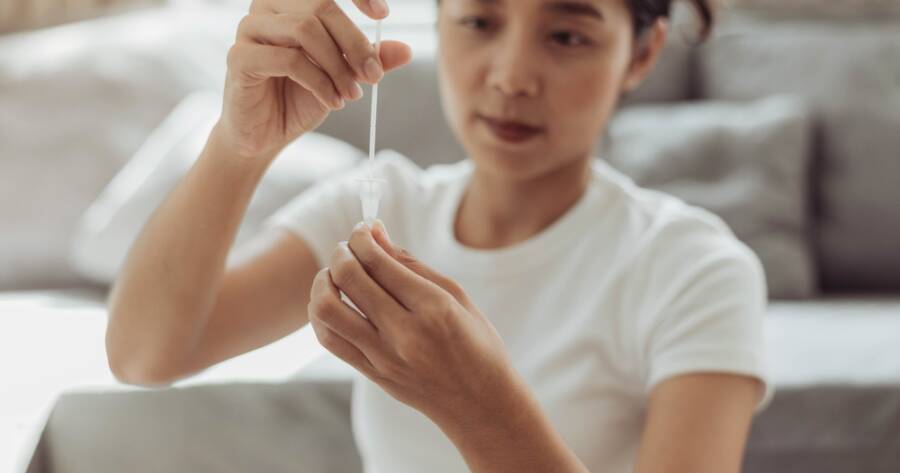At-home COVID tests have become a convenient tool for quickly checking your infection status without visiting a clinic. As variants continue to circulate, many people wonder how accurate at-home tests really are. Understanding how they work, their limitations, and when to use them is key to getting reliable results and protecting public health.
How At-Home COVID Tests Work
At-home COVID tests, also called rapid antigen tests, are designed to detect proteins from the SARS-CoV-2 virus. Using a nasal swab, the test identifies viral antigens through a chemical reaction that produces a visible color change, usually within 15 minutes. These tests are convenient because they don’t require laboratory processing and can provide fast results when someone develops respiratory symptoms.
However, while rapid antigen tests are useful for quickly identifying infection, they are less sensitive than lab-based PCR tests. This means they may not detect low levels of the virus early in an infection or when symptoms are mild. Still, when used correctly and at the right time, at-home tests are a reliable and accessible way to help control the spread of COVID-19.
Accuracy of At-Home COVID Tests
At-home COVID tests are effective tools for identifying infections, especially when used during periods of active symptoms. They detect the presence of viral proteins, but their performance depends heavily on when the test is taken and how much virus is present in the sample. Testing too soon after exposure can lead to false negatives because viral levels may still be too low to detect.
Accuracy also relies on following instructions carefully and ensuring the test is stored and used properly. Because single rapid tests can miss early infections, experts recommend retesting 48 hours after an initial negative result. When used correctly and at the right time, at-home tests can provide a reliable picture of infection status and help prevent further transmission.
How to Use At-Home Tests Correctly
Each home testing kit comes with detailed instructions, and following them carefully is key to getting an accurate result. Generally, the process involves washing your hands, swabbing inside your nose, mixing the swab with a provided solution, and applying a few drops onto a test strip or cartridge. After waiting the recommended time—usually 10 to 15 minutes—you can interpret your results based on the appearance of control and test lines.
It’s essential to collect a good nasal sample and avoid contaminating the swab. Make sure the test is used within its valid date range and stored according to the manufacturer’s recommendations. Incorrect use, such as insufficient swabbing or testing too soon after exposure, can lead to inaccurate results and confusion.
Do At-Home Tests Work Against New COVID Variants?
Yes, most at-home COVID tests continue to detect newer variants effectively. The reason is that these tests target a part of the virus—the nucleocapsid protein—that has remained relatively stable even as the virus evolves. Research and regulatory monitoring show that currently authorized antigen tests still perform well against circulating strains, including Omicron subvariants.
However, as new mutations emerge, manufacturers and health agencies continually review test performance. The FDA and CDC monitor variant impact and adjust test authorizations if necessary. It’s wise to use reputable, FDA-authorized brands and keep updated on public health guidance to ensure the test you’re using remains effective for current variants.
Can You Use Expired COVID Tests?
While it’s best to use tests before their printed expiration date, not all expired kits are immediately invalid. The FDA has extended the expiration dates for many brands after further stability testing showed that they remain reliable for longer periods. You can verify whether your specific test is still valid by checking the FDA’s online expiration date list.
That said, using a test long past its approved date may lead to inaccurate results. The chemical reagents and test strips can degrade over time, increasing the risk of false negatives. Always confirm your test’s updated expiration status before use to ensure accuracy and avoid unnecessary confusion.
Staying Informed for Safer Testing
At-home COVID tests have made monitoring illness more accessible than ever, but their value depends on correct timing, usage, and interpretation. Taking multiple tests when symptoms develop or after exposure increases reliability, and staying aware of test expiration updates ensures trustworthy results. As new variants arise and public guidance evolves, responsible self-testing remains one of the most effective ways to protect yourself and your community.

